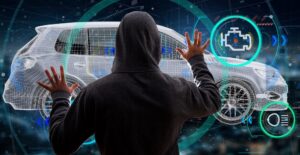In recent years, artificial intelligence (AI) has made great strides in becoming more advanced and sophisticated. However, as AI technology continues to evolve, so too do the risks associated with it.
Artificial intelligence is still in its infancy, but it has already begun to transform our world in profound ways. But as AI begins to exert a growing influence over our lives, it is also raising new questions and concerns about the risks it poses.
Artificial intelligence technology is becoming increasingly complex and difficult to understand, which could lead to unforeseen errors with potentially disastrous consequences. There is also a risk that artificial intelligence could lead to job loss because machines can do tasks more efficiently than humans.
One of the most significant risks of artificial intelligence is that it could lead to the development of intelligent machines that are capable of outthinking and outwitting humans.
Some experts say that AI could be a threat to humanity, while others believe that the risks are overblown. Here’s a look at the potential risks of artificial intelligence.
Risk 1: JOB LOSS
The advancement of artificial intelligence (AI) and automation technologies has led to fears that jobs will be lost as machines increasingly take on tasks that have traditionally been carried out by human workers. While it is true that AI and automation technologies can result in increased efficiency and productivity, leading to the displacement of some jobs, there is also evidence that these technologies can create new job opportunities.
One of the biggest risks of artificial intelligence is that it could lead to job loss on a mass scale. As AI continues to evolve, it will become increasingly capable of completing tasks that have traditionally been done by human beings. This could result in large numbers of people losing their jobs as companies look to automate their operations.
The deployment of artificial intelligence (AI) technologies has the potential to cause widespread displacement of workers. A recent study by the McKinsey Global Institute estimates that as many as 375 million workers—or roughly 14 percent of the global workforce—may need to switch occupational categories by 2030 as a result of automation. This represents a significant increase from prior estimates, which suggested that between 39 and 73 million jobs globally were at risk of being automated by 2030.
With more machines completing tasks that were traditionally done by humans, there will be a decrease in demand for human labor. This will lead to mass unemployment and underemployment, as people compete for jobs that are increasingly scarce.

As AI technology advances, so too does the need for skilled workers who can develop and maintain AI systems. The demand for these skills is expected to grow at an accelerated pace in the coming years.
The advancement of artificial intelligence will also lead to an increased demand for workers in maintenance and technology fields. This is due to the fact that AI will automate many tasks that are currently performed by human workers. As a result, there will be a need for workers who can maintain and repair the AI-powered machines. In addition, there will also be a need for workers who can develop and improve upon the technology.
Risk 2: Bias
There are a number of risks associated with AI, one of which is bias. AI can be biased in a number of ways, including through the use of data that is itself biased, through the use of algorithms that are biased, or through the use of humans who are biased. This bias can lead to a number of problems, including the reinforcement of existing inequalities, the creation of new inequalities, and the perpetuation of harmful stereotypes.
Bias in artificial intelligence (AI) can be due to datasets. This means that if the data used to train a machine learning algorithm is biased, then the algorithm will also be biased. For example, if an AI algorithm is trained on a dataset of images that only contains pictures of white people, then the algorithm will learn to recognize only white people. This can lead to problems, such as the algorithm not being able to recognize people of color.
If an AI is trained using only data from, for example, conversations between men or a certain political or religious ideaology, the resulting AI may be biased against women, other political views or certain religious communities.
Risk 3: Weaponization
Artificial intelligence has been touted as a transformative technology that could revolutionize warfare. However, there are also risks associated with the weaponization of AI. One of the key risks is the possibility of an AI arms race, in which countries compete to develop ever-more sophisticated weapons systems. This could lead to a new type of arms race, one that is difficult to control and which could have devastating consequences.
AI technology can be used to create highly sophisticated and effective weapons, which could potentially be used by terrorists or other malicious actors. Additionally, AI weapons could fall into the hands of rogue states or non-state actors, who could use them for nefarious purposes. Additionally, there is a risk that AI weapons could be used to target civilians or infrastructure, as well as being used in traditional warfare.
The impact of AI: Social, economic, political
The advent of artificial intelligence has had a profound impact on society. From the way we communicate to the way we work, AI is changing the landscape of social interaction. Here are seven ways AI is impacting social interaction:
- The way we communicate: AI is changing the way we communicate with each other. With the help of chatbots, we can now have conversations with digital assistants that mimic human conversation. This technology is also being used to create more realistic avatars for video games and virtual reality experiences.
- The way we work: AI is changing the way we work by automating tasks that were previously done by humans. For example, many customer service jobs are now being handled by chatbots. This technology is also being used to develop autonomous vehicles and to create smarter factories where machines can work without human supervision.
- Today, AI is used to enhance our social media interactions by providing us with recommendations, monitoring our behaviour and providing us with targeted content.
- In the future, AI will become even more involved in our social lives, potentially changing the way we interact with each other on a fundamental level.
- Some experts believe that AI could eventually lead to the development of new forms of communication that are not yet possible for humans.
- Others believe that AI will help us to better understand and empathize with each other, as well as provide invaluable insights into our own behaviour.
- Whatever the future holds, it is clear that AI will have a significant impact on our social lives in one way or another.
The Economic Impact of AI
There is no doubt that artificial intelligence (AI) is transforming the economy. With its ability to automate tasks, enhance decision-making, and improve efficiency, AI is changing the way businesses operate and creating new opportunities for growth.
AI is already having a significant impact on the economy, and this is only likely to increase in the future. One study found that AI could contribute an additional $15.7 trillion to the global economy by 2030. This would be equivalent to around 10% of global GDP.
So far, AI has mostly been used in manufacturing and logistics, as well as in finance and healthcare. However, its potential applications are much wider than this. AI could be used to boost productivity in all sectors of the economy, from agriculture to transportation.
The field of artificial intelligence is one of the most rapidly advancing and controversial topics in economics today. While its potential applications are nearly limitless, there is significant debate surrounding its impact on society, particularly with regards to employment and income inequality.
There are those who believe that artificial intelligence will lead to increased economic growth and efficiency, as well as new opportunities for businesses and workers. However, there are also those who believe that AI will exacerbate existing problems such as joblessness and income inequality.
The truth is that it is still too early to tell what the long-term impact of artificial intelligence will be on the economy. However, it is clear that AI will have a significant impact on how we work and live in the future.
How AI is Changing Politics
One way AI is impacting politics is through predictive analytics. By analyzing past voting patterns and data about individual voters, AI can predict how people are likely to vote in future elections. This information can be used by campaigns to target their messaging and get more people to the polls.
Another way AI is being used in politics is through automated campaigning. This involves using software to manage various aspects of a campaign, from fundraising to ad targeting. Automation can free up time for campaign staff so they can focus on other tasks, such as door-to-door canvassing.
Reducing the Risks of AI: Can We Control It? Governance, Collaboration, and Education
As AI continues to evolve, it is important to consider how best to protect against risks associated with its development and deployment. There are three key areas where efforts to reduce the risks of AI can have the greatest impact: governance, collaboration, and education.
1. Governance
There are a number of factors that need to be considered when it comes to governing AI. First, we need to decide who should be responsible for regulating AI. There are many different stakeholders involved in AI, including government agencies, tech companies, and research institutes. Each of these groups has a different vested interest in AI and will likely have different ideas about how it should be regulated.
Second, we need to establish clear guidelines for what types of activities are acceptable for AI systems to engage in. These include things like data privacy, data bias, and the impact of AI on jobs. Additionally, there are concerns about the misuse of AI for things like facial recognition and predictive policing.
Governance structures need to be put in place in order to address these concerns and ensure that AI is used ethically and responsibly. Otherwise, we risk creating an unequal society where only those with access to the best AI technology thrive.
2. Collaboration
The answer to this question is not a simple one. There are many factors to consider when discussing the control of artificial intelligence (AI). One important factor is the level of collaboration between humans and AI.
Some experts believe that humans will need to work closely with AI in order to keep control over it. This collaboration would involve sharing data and knowledge between humans and AI systems. The goal would be to create a feedback loop where both humans and AI can learn from each other.
One way to ensure that AI remains under control is through collaboration between humans and machines. This could involve humans working with AI systems to create better algorithms, or it could mean training AI systems to understand human values and objectives. By collaborating with AI, humans can help guide its development in a positive direction while also learning from the machine’s unique perspective.
Others believe that it may be possible to keep control over AI without collaborating with it. This would involve keeping tight controls over the data that AI systems have access to. It would also require careful monitoring of the output of AI systems.
3. Education
There are a number of ways to control AI, including through education. By teaching people about AI and its risks, we can help them make informed decisions about its use. Additionally, we can develop policies and regulations to help limit the potential harm that AI may cause.
Ultimately, it’s up to us to decide how much control we want over AI. If used responsibly, AI can be a great tool that improves our lives in many ways. However, if we’re not careful, it could also lead to unforeseen consequences that we may not be able to control.
Conclusion
In conclusion, the risks of AI are manifold. They range from the potential for biased algorithms to the loss of jobs to the rise of AI-powered weapons. The solution is not to try to halt the progress of AI, but to manage the risks through regulation and oversight. With proper management, the benefits of AI can be maximized while the risks are minimized.






